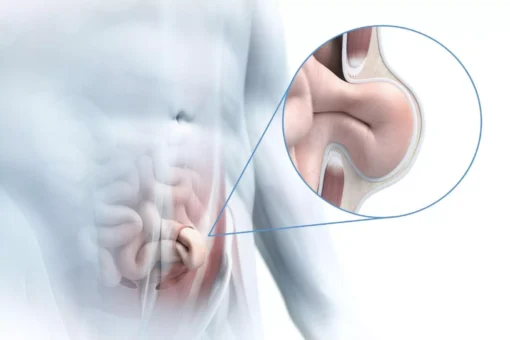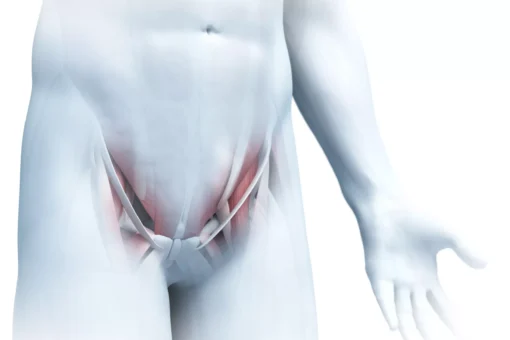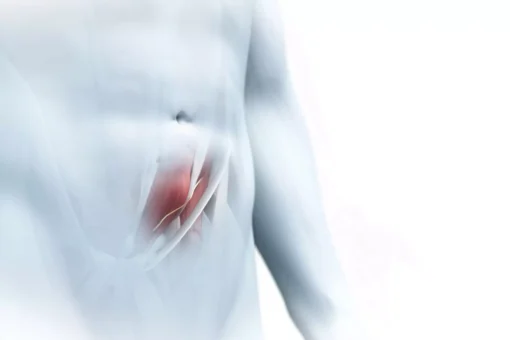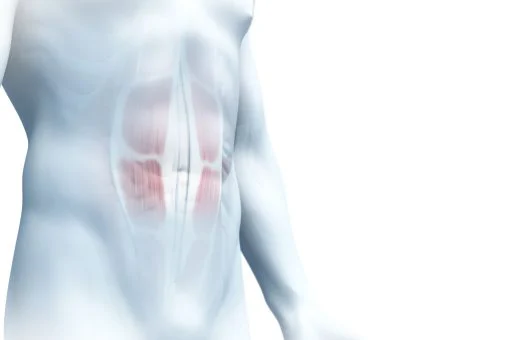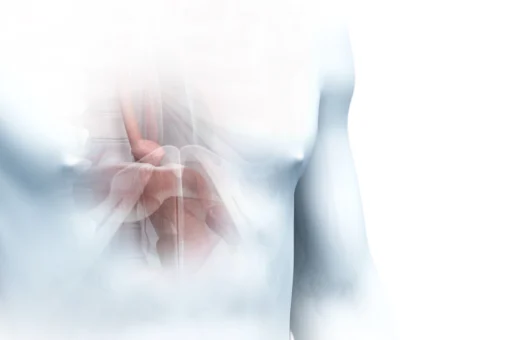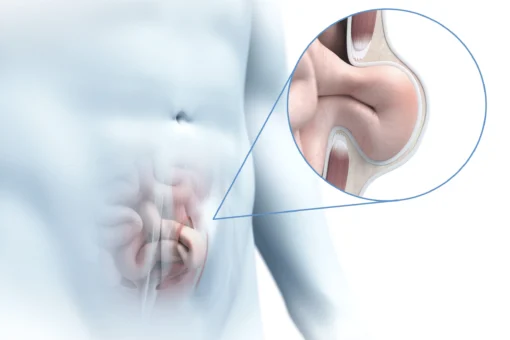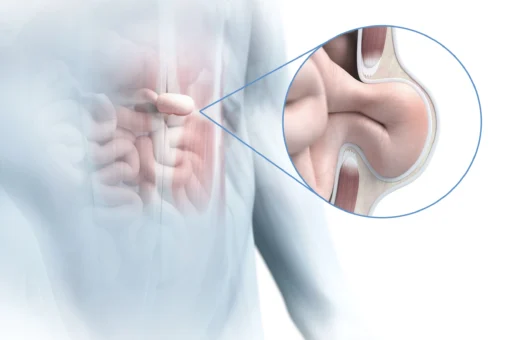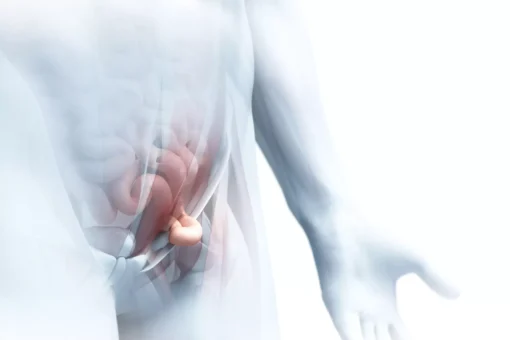The femoral hernia
Content
In femoral hernias, the peritoneum and sometimes loops of intestine push into the area of the thigh through a weak spot in the tissue. About 5 to 10% of all hernias are femoral hernias.
The hernial orifice of a thigh hernia is always below the inguinal ligament. It is usually relatively small, which is why the hernia can easily become incarcerated. This is also favoured by the movement activity of the hip area.
If an incarceration (incarcerated hernia) occurs, it manifests itself as severe pain. Nausea and vomiting are further accompanying symptoms. Since the trapped organs are no longer supplied with blood, surgery must be performed immediately.
In 60% of cases, the thigh hernia occurs on the right side, in 20% on both sides.
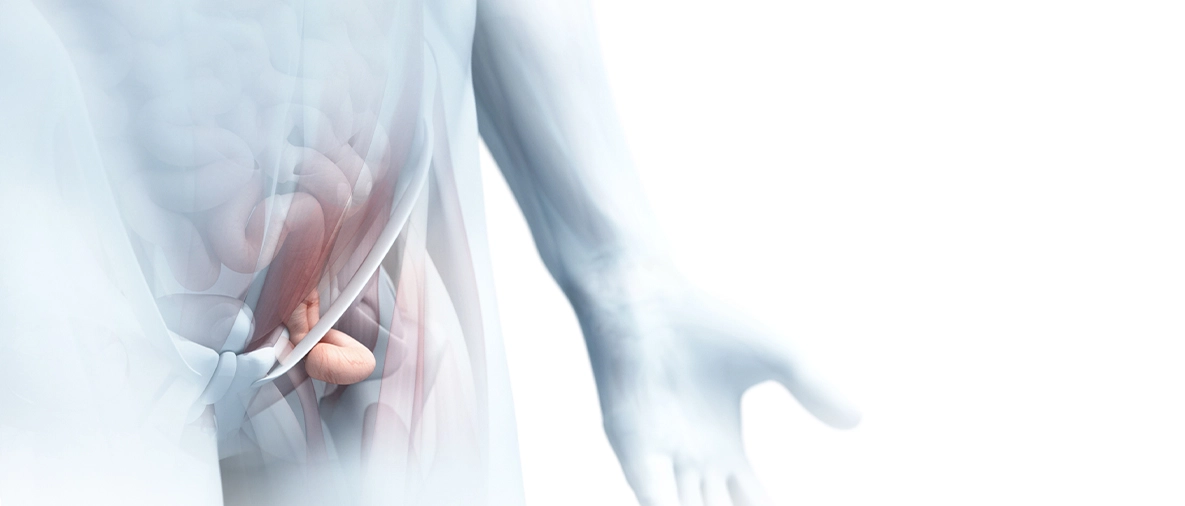
The femoral hernia in women
Women are four times more likely to be affected by thigh fractures. It mostly affects overweight women over 50.
Pregnancy, obesity, collagen weakness, increasing age and diseases such as Marfan syndrome or Ehlers-Danlos syndrome increase the risk of femoral hernias. Moreover, femoral hernias often occur after weight loss.
The femoral hernia in men
In men, femoral hernias occur more often after inguinal hernia surgery. During the operation, the inguinal ligament is raised to repair the hernia. This promotes the formation of a hernia sac through the inguinal canal and the formation of a femoral hernia. In addition, however, a hernial orifice can also occur due to increased tension if the suture was closed too tightly after an operation.
Symptoms of a femoral hernia
The following symptoms can occur in connection with a femoral hernia:
- Diffuse, pressing pain in the groin
- Irregular bowel movements
- In the event of an incarceration, severe pain in the groin
- The pain may radiate to the abdomen and inner thighs.
- Protrusion below the inguinal ligament
- In obese patients, some of the swelling cannot be felt.
Surgery in the case of a femoral hernia
Since the risk of entrapment is greater with femoral hernias, they are often operated on as soon as possible. Incarcerated hernias must be operated on immediately.
In addition to the usual risks of anaesthesia, hernia operations can cause bruising, water retention and swelling in the groin area. Other complications can include urinary retention, infection, injury to vessels and nerves, thrombosis and embolism. After the operation, pain and sensory disturbances may occur, which subside after a few days.
It can happen that a femoral hernia occurs again in the same place. If a synthetic mesh is used during the operation, recurrence is less frequent.
Hardening in the area of inserted synthetic nets, as well as rejections or allergic reactions to the net are extremely rare.
Femoral hernias can be operated on either in an open or a closed (laparoscopic) procedure. In the closed procedure, less tissue is damaged, which is why the wounds heal faster.
You can find out more about the different surgical procedures we use here.


